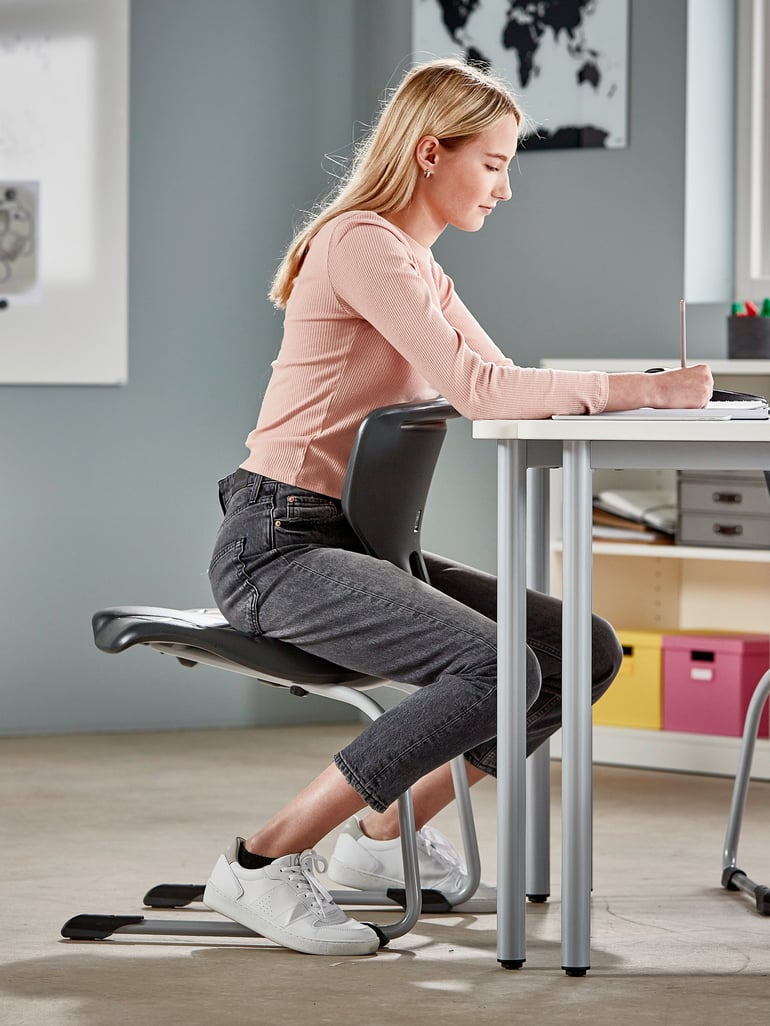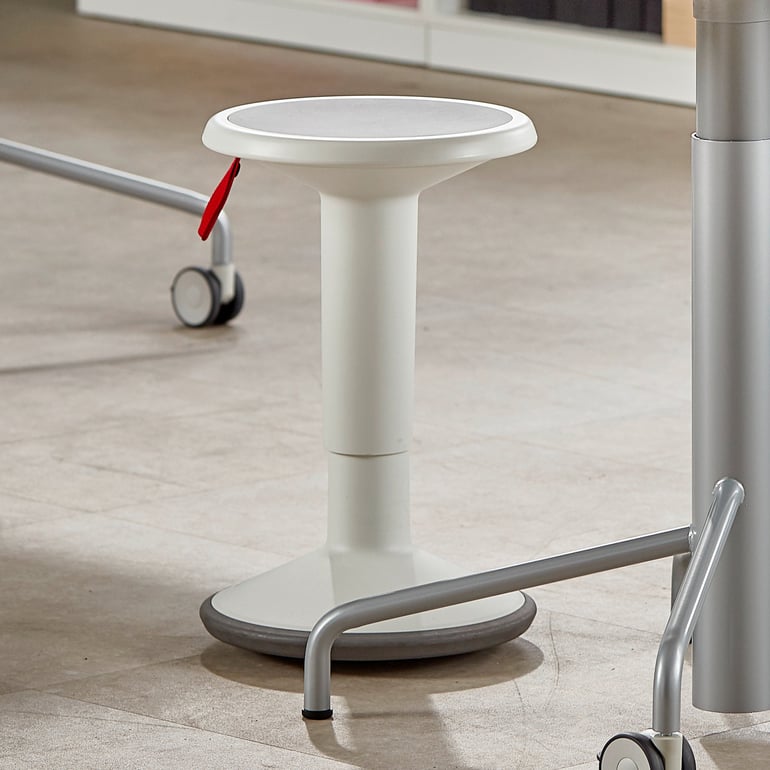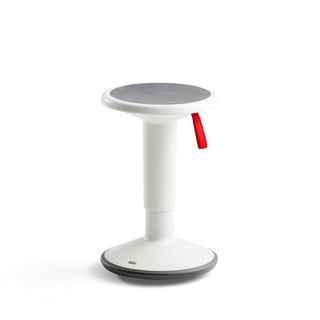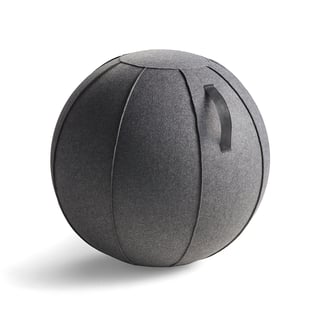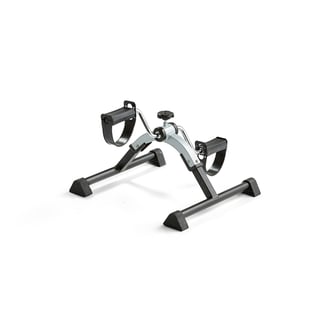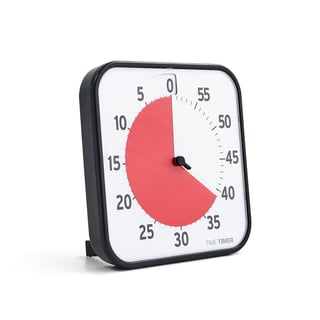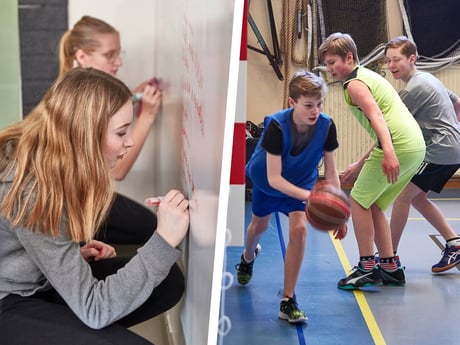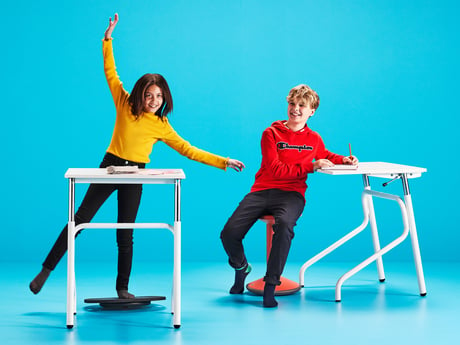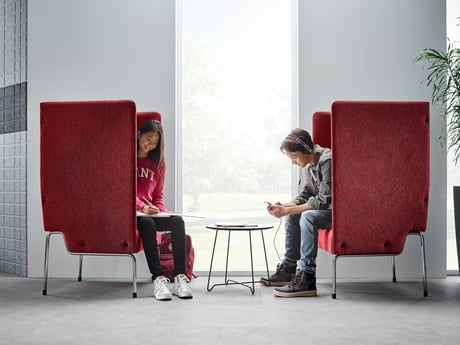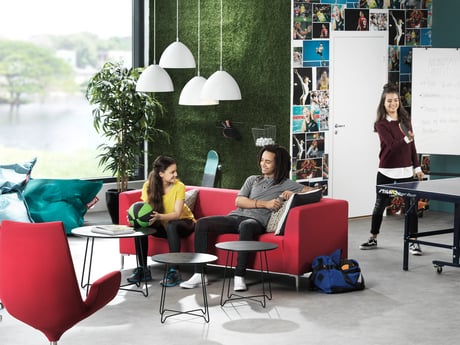- AJ Products UK
- Blog: Tips to Inspire Happiness at Work
- Ergonomics in the workplace
- How an active classroom can help combat childhood obesity
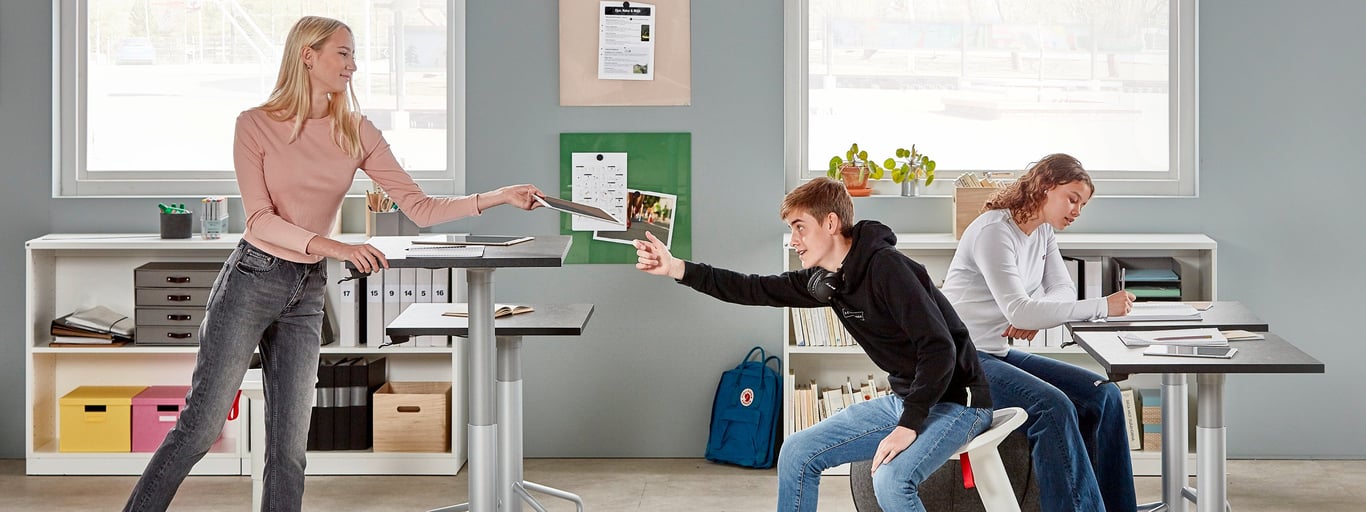
How an active classroom can help combat childhood obesity
Good for both body and soul
The active learning classroom is based on the premise that physical activity affects brain activity, that movement and learning are closely linked and that changing your working position regularly improves concentration. Alternating between sitting and standing improves muscle strength, balance and blood circulation. This means that an active classroom has both mental and physical benefits.
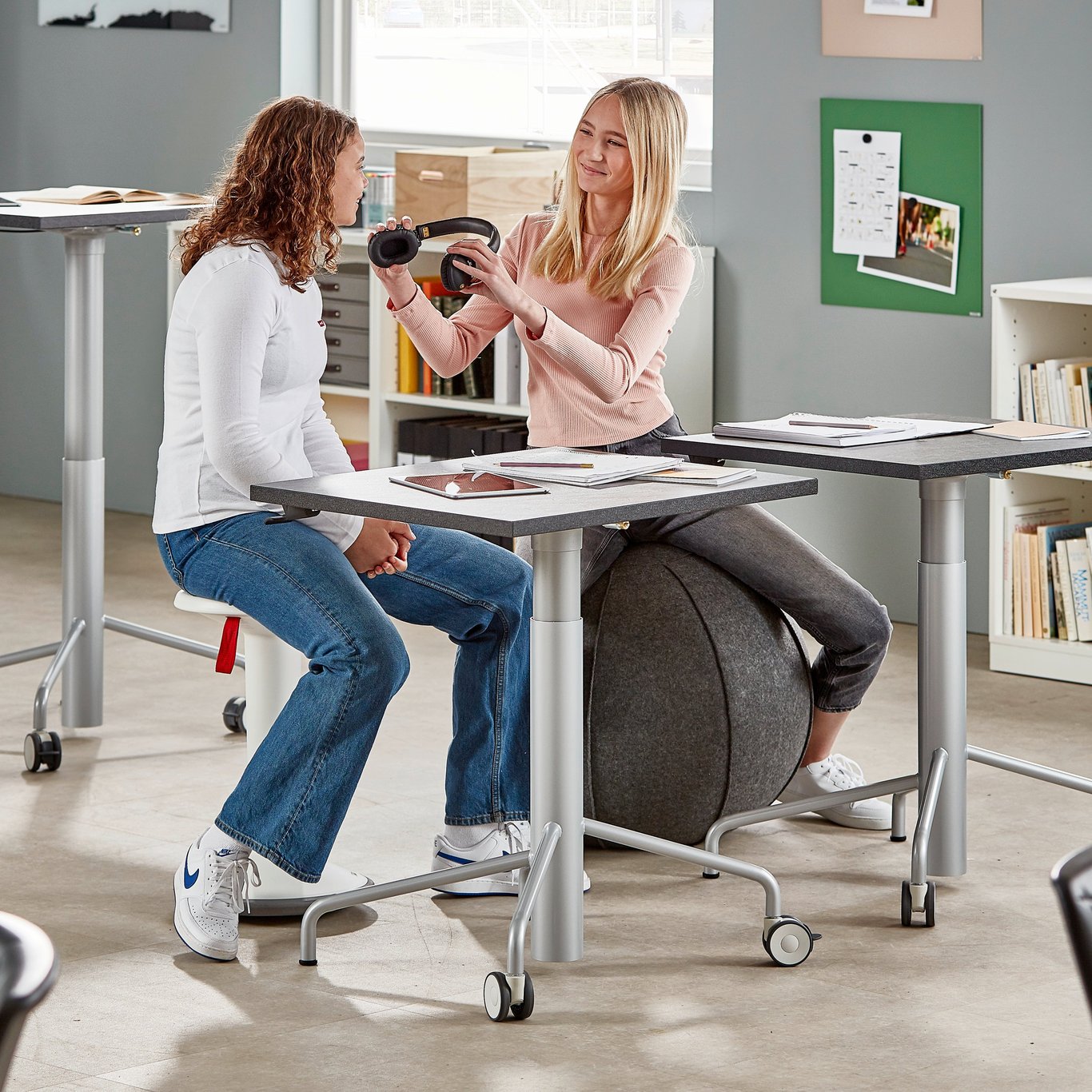
Standing desks to support wider movement
Sit-stand desks offer students the possibility to decide for themselves if and when to switch between sitting and standing. The variety this provides prevents repetitive strain and helps them maintain focus on their work rather than fidgeting. An alternative is to combine standard desks with high tables for use when working on group projects. The students can then choose a different setup depending on the lesson or task. This teaches kids that movement can be a normal part of the working day, a lesson they can take with them as they grow up and move into the world of work.
Active sitting chairs to encourage productive fidgeting
There's nothing wrong with sitting down per se, but it's important not to sit all the time. Because everyone has their own unique sitting style, choosing school chairs that allow students to sit facing forward or backwards on the seat and rock slightly as they sit is an effective way to ensure they are sitting comfortably. Balance stools are another way to keep kids moving while seated at their desks. This type of seat works the core muscles to improve posture and forces students to use their legs to stay steady. The body undertakes this small amount of movement subconsciously and the fidgeting effect suits many children who struggle to sit completely still during lessons.
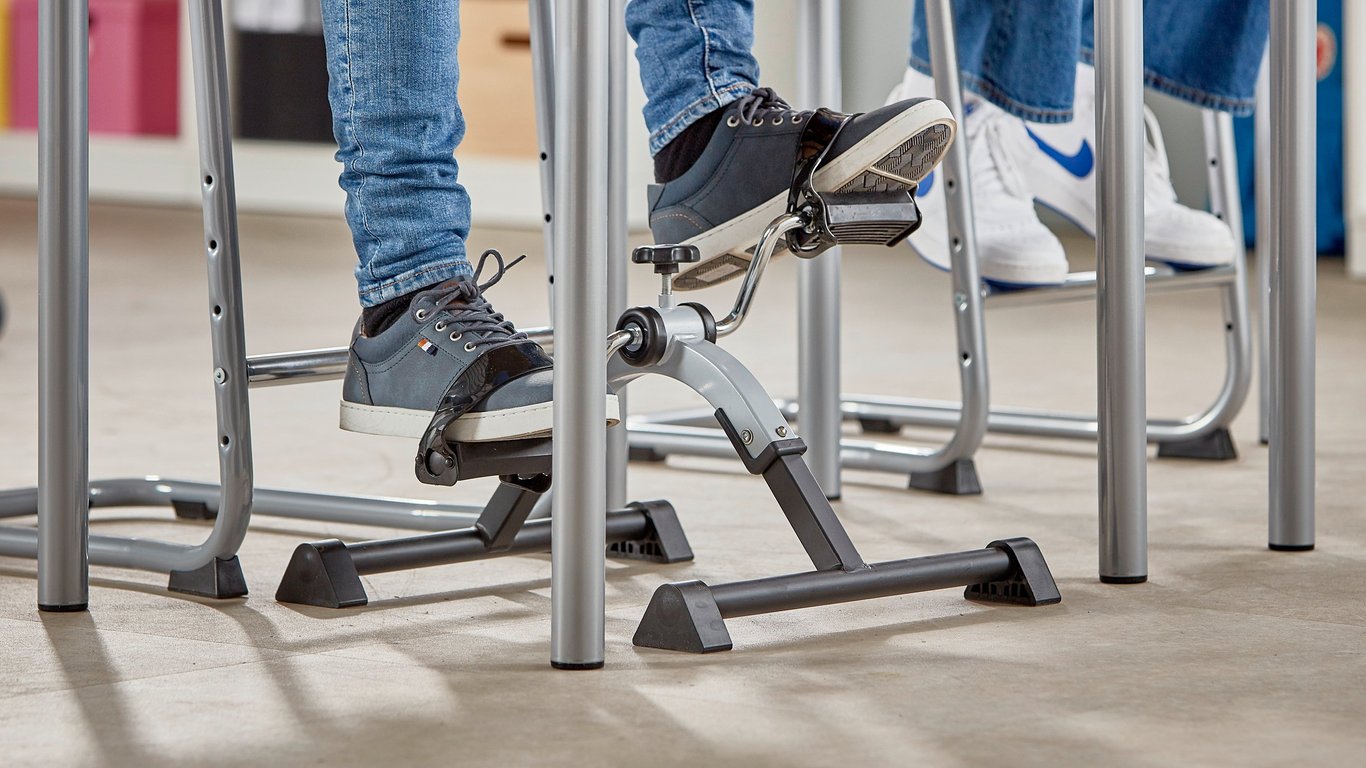
Simple exercise equipment to provide an outlet for high energy levels
Many students find it hard to sit still in the classroom and burning off excess energy through increased physical activity can improve their learning ability. Giving students the opportunity to use a desk bike or pedal exerciser is a simple way to boost activities levels while contributing to a calmer classroom atmosphere. It means restless pupils have a proper outlet for energy that would otherwise get them into trouble or distract the rest of the class. It allows them to focus better on the lesson. These products are easy to wipe down and share between students.
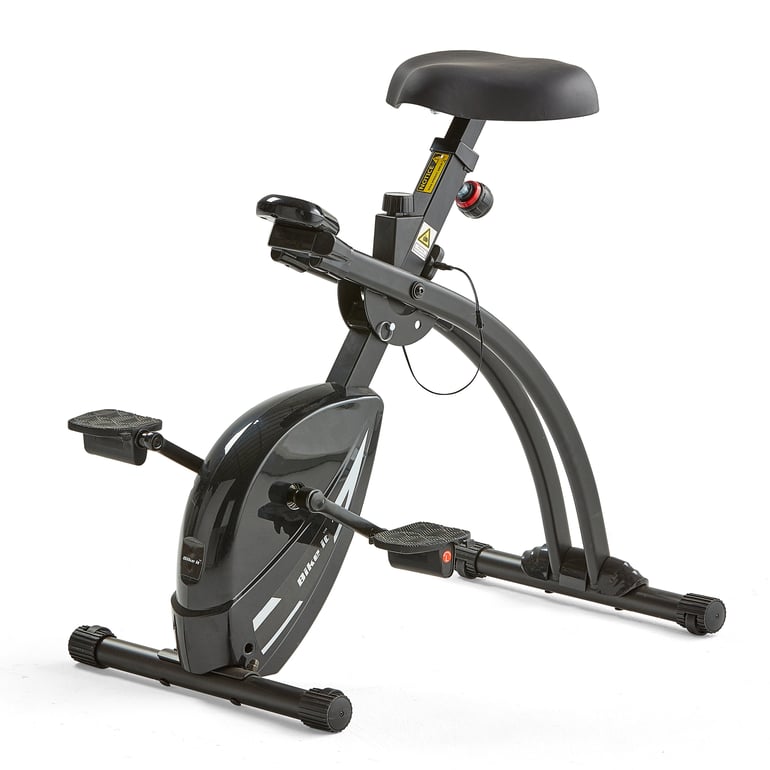
TIP! An extra challenge
Create an activity-based learning environment at school. With a desk bike, students can make use of the positive effects of physical activity while studying. Cycling increases blood circulation and oxygen levels, which leads to more energy and better focus.
Find out more about the desk bike
Whiteboards for group work
Standing up boosts cooperation, so is great for group projects. The results of the group work can be compiled on a whiteboard. In addition to reporting their ideas, this also allows the different groups to draw inspiration and learn from each other. When students use writing boards, it is also easier for the teacher to monitor their progress and check which students need help.

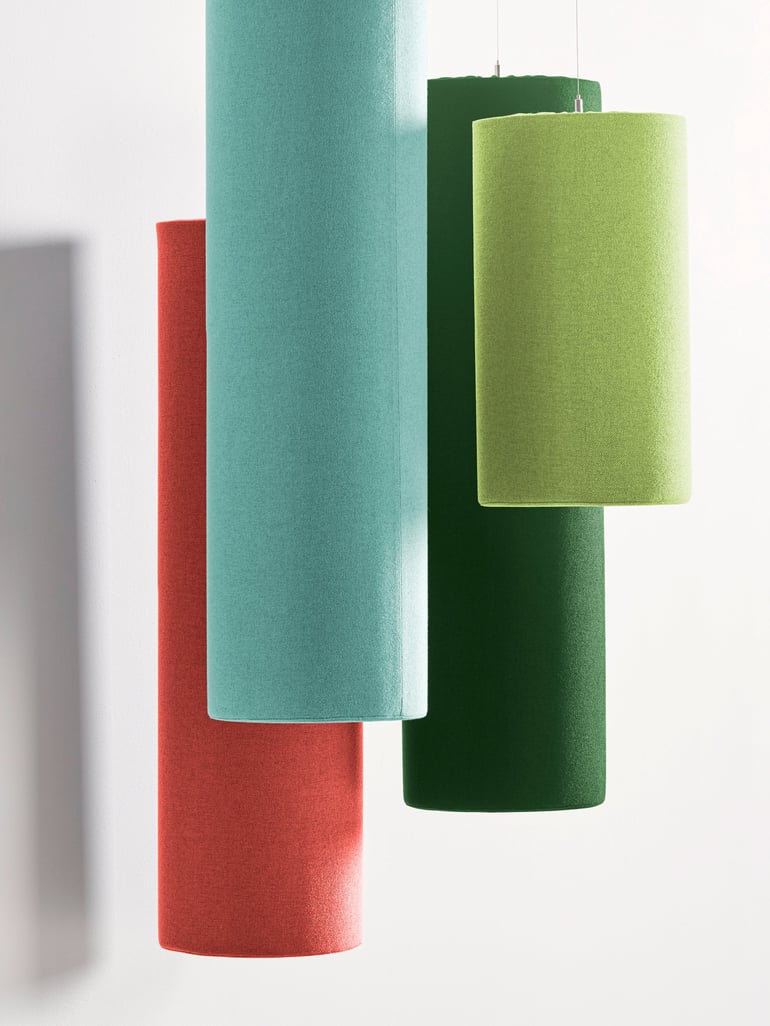
Don't forget acoustics!
When classroom activity intensifies, noise levels tend to do the same, so ceiling- and wall-mounted acoustic panels are a smart investment. Sofas, screens and thick curtains can also make a huge improvement, as can desks with sound-dampening tops. Carpets or matting are also great sound absorbers, while giving students the option to work sat down on the floor at times. This might not sound very active, but it encourages them to vary their work position – a cornerstone of active classrooms!
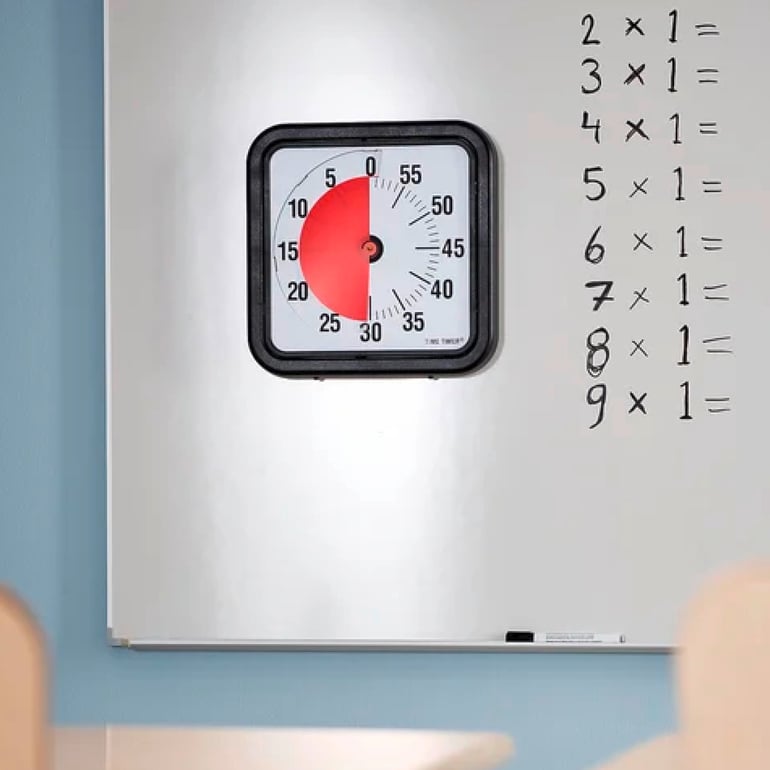
Four quick tips:
1. Consider choosing desks, floor screens and whiteboards with wheel brakes. This makes it easier to rearrange the furniture so the room can be used in different ways – an activity in itself.
2. Research shows that standing up makes people more active and improves cooperation. With this in mind, try organising group projects around a high table or in front of a whiteboard.
3. Set times for students to choose for themselves how they want to work: they will appreciate the freedom and concentrate better.
4. A further step towards giving students the best possible conditions is to store their phones safely in a lockable mobile phone storage cabinet during lessons.
Remember variety and movement are two key concepts when creating an active classroom! AJ Products is passionate about active working as a way to get kids moving and has teamed up with ukactive to find ways to improve health in schools and workplaces.
